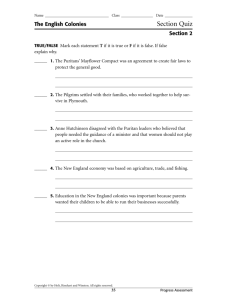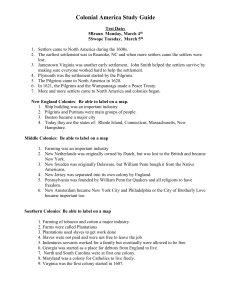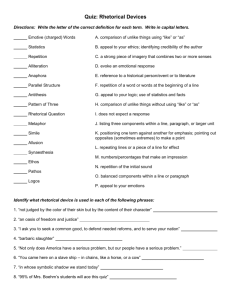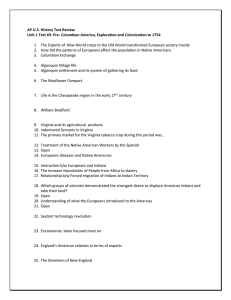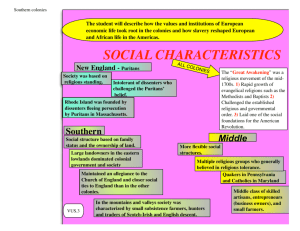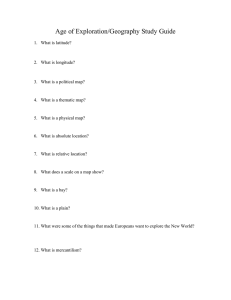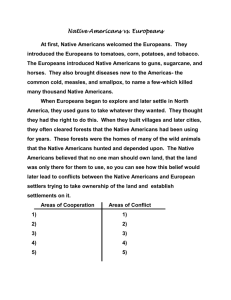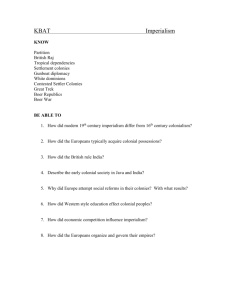Unit 1
advertisement
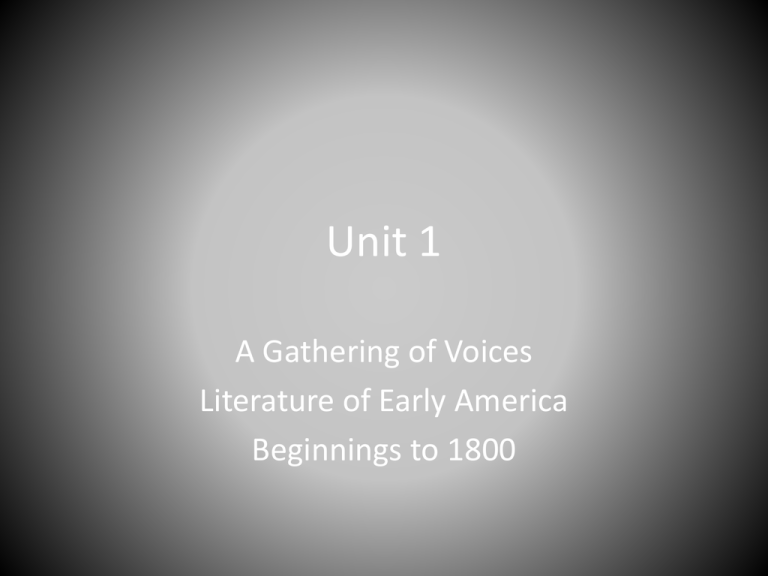
Unit 1 A Gathering of Voices Literature of Early America Beginnings to 1800 Snapshot of the Period • In 1492 (Columbus) America was populated by several hundred Native American tribes – Used Bering Land Bridge from Asia – Spoke several different languages – Referred to as “Indians” by Europeans • By 1699 European colonies were spread along east coast and some as far west as New Mexico. • In 1776, 13 colonies declared independence Peoples of North America • The map on page 3 shows Native American tribe locations and influx of settlers – Spanish – Florida, California, Texas – French – Maine and Gulf of Mexico – Dutch – New York and Delaware – English – Virginia, New England, Pennsylvania Historical Beginnings • First Americans – unknown arrival (possibly 12000+ years ago. – Rich cultural presence • Oral literature – myths, legends, songs – First settlers learned agriculture and woodworking from natives • Corn, squash, canoes – First settlers probably wouldn’t have survived without help of natives Pilgrims, Puritans, and Planters • 1620 – Mayflower lands in Plymouth, Massachusetts – Reformers who tried to purify Church of England – Initially referred to as Puritans, but were called Pilgrims in the New World • 1720 – Puritanism had declined, but Great Awakening brings new converts (only hard work and self-reliance though) • Southern Colonies – different crops, climate, and religion – Plantations – 1619 – slaves first brought to Virginia Creating a Nation • Europeans wanted to create a “city upon a hill” – an ideal community founded on moral and religious values – What would they think of modern times? • Colonists were assisted by the Native Americans and created small farms and plantations • The Enlightenment shocked Puritan beliefs – idea that people are basically good and can use reason to create a better society New World Natural Environment • Place of Wonder – Long shores and sandy beaches with vast forests – Mountain ranges and fertile valleys – Lots of plants, fish, birds, and animals • At one with the place – Native Americans believed people belonged to the land – Lands, waters, and animals were a part of the community Colonists’ attitudes • Dream vs. Reality – Dream was to create a theocracy (community governed by religious principles) – Reality was starving, cold, disease, and animals • Independent place and people – 18th C. Europeans had firm foothold in America – Built towns, roads, and churches – Worried less about survival and more about selfgovernment American Literature • Native American – myths and legends – People communicate with land, animals, and nature – People and nature are in harmony • Nature – in particular forests and wild places – Played a large role in both physical and symbolic • Place and Nation – living here turned Europeans into Americans American literature • Theme – central idea, message, or insight that a literary word reveals – Wilderness – insights into the nature and meaning of the wilderness – Community – central message that America was a unique combination of community and independence – Individualism – self-reliance and individualism are fundamental American values Roles of American writers • Oral poet and historian – Native American – vital role in society (related history and honored heroes) • Preacher and lawmaker – wanted to articulate the will of God (made audiences tremble with fear) • Autobiographer – wanted to make reader question what should be learned and why something happened Part 3 • Types of speeches – Political – focuses on an issue relating to government or politics – Address – formal speech that is prepared for a special occasion – Sermon – speech usually based on a scriptural text and is intended to provide religious instruction Persuasive techniques • Persuasion – speech or writing that tries to get the audience to think or act in a certain way • Persuasive techniques – Logical appeal – builds a well-reasoned argument based on evidence, such as facts, statistics, or expert testimony – Emotional appeal – attempts to arouse the audience’s feelings, often by using loaded words that convey strong connotations – Ethical appeal – directed at the audience’s sense of morality or values Rhetorical devices • Rhetorical devices – patterns of words and ideas that create emphasis and stir the audience’s emotions – Repetition – restating an idea using the same words – Restatement – expressing the same idea using different words – Parallelism – repeating a grammatical structure – Antithesis – using strongly contrasting words, images, or ideas – Rhetorical questions – asking questions for effect, not to get answers
